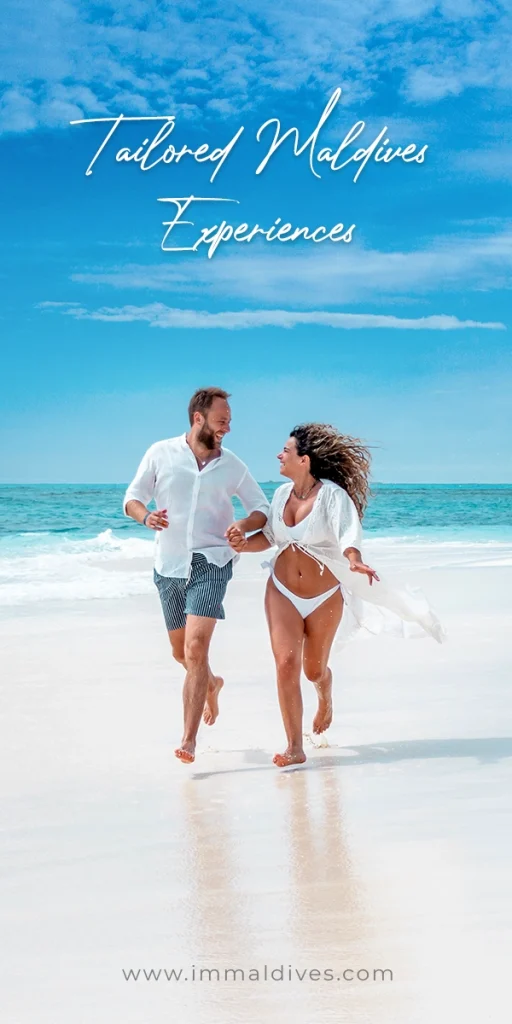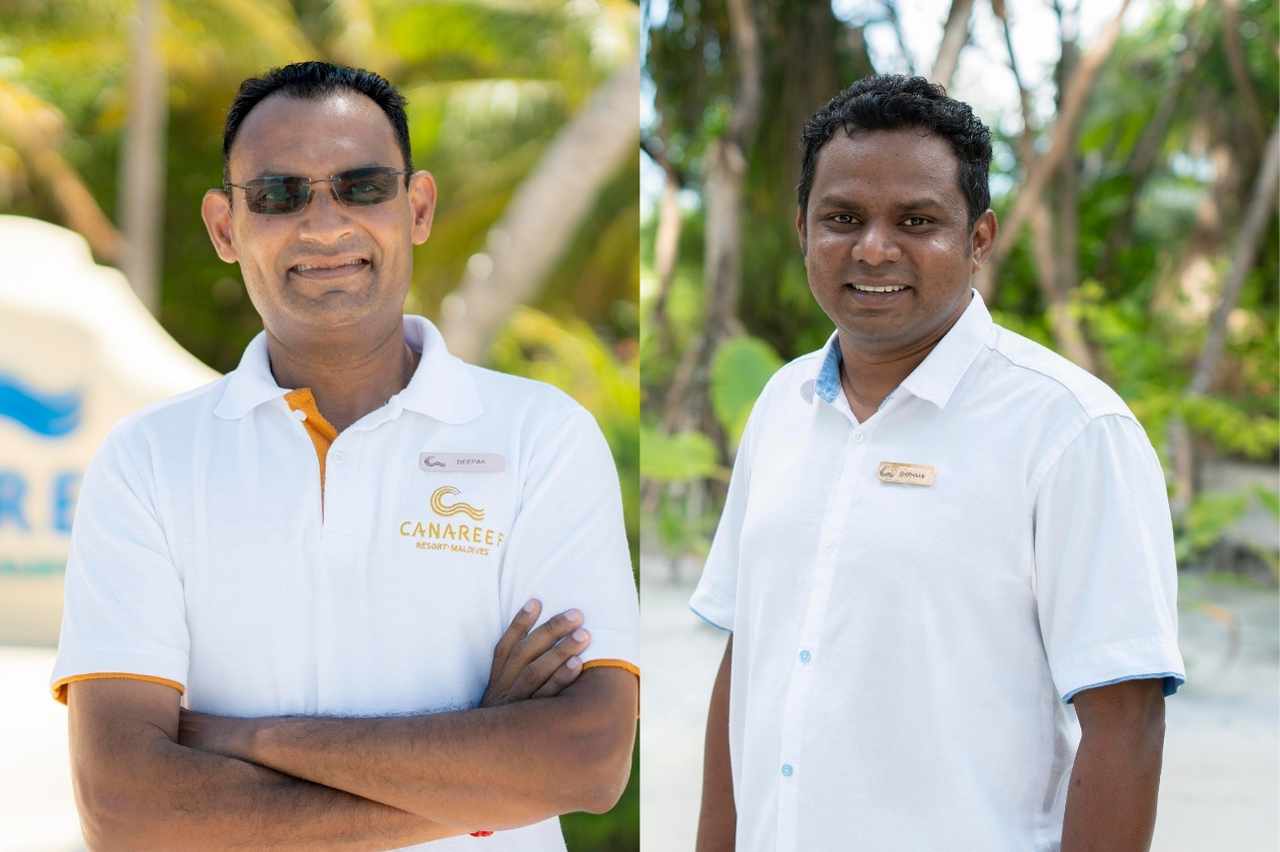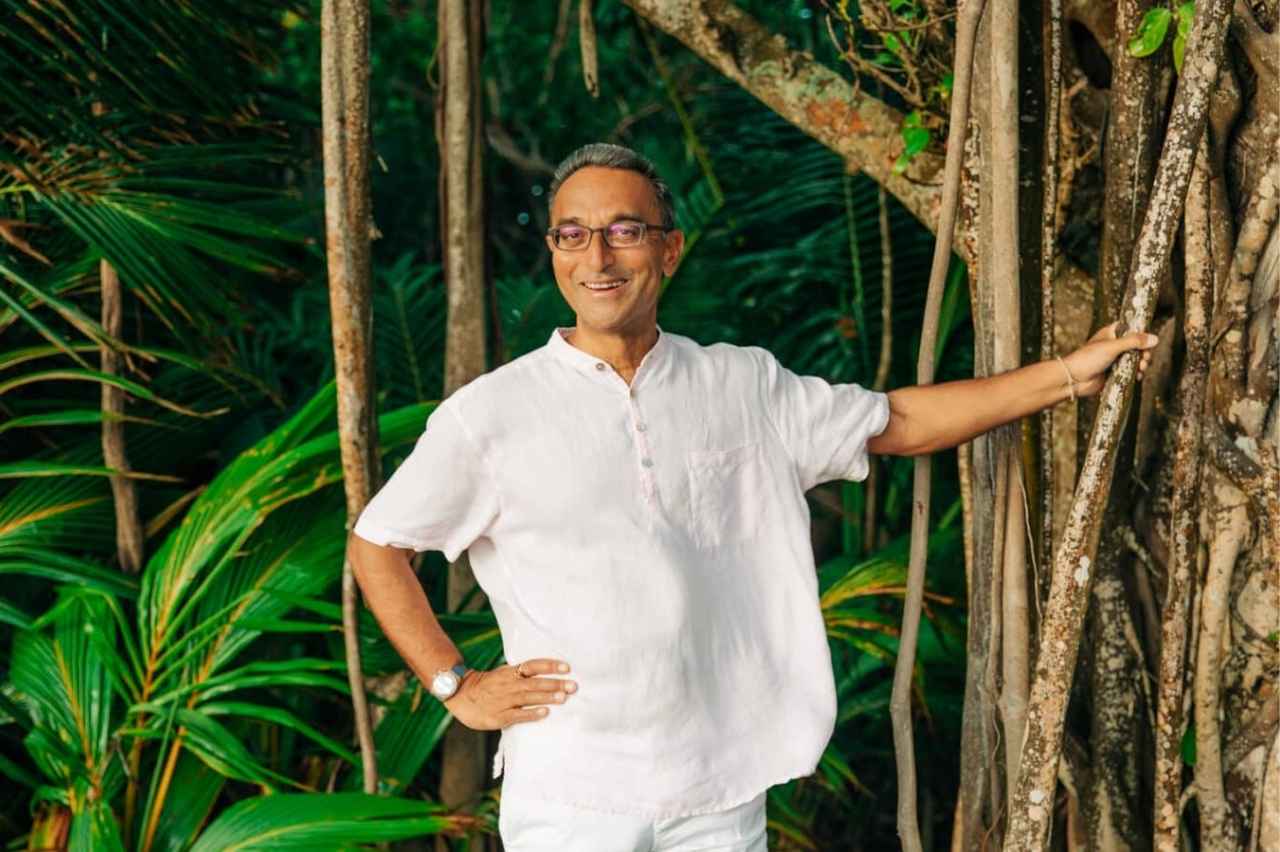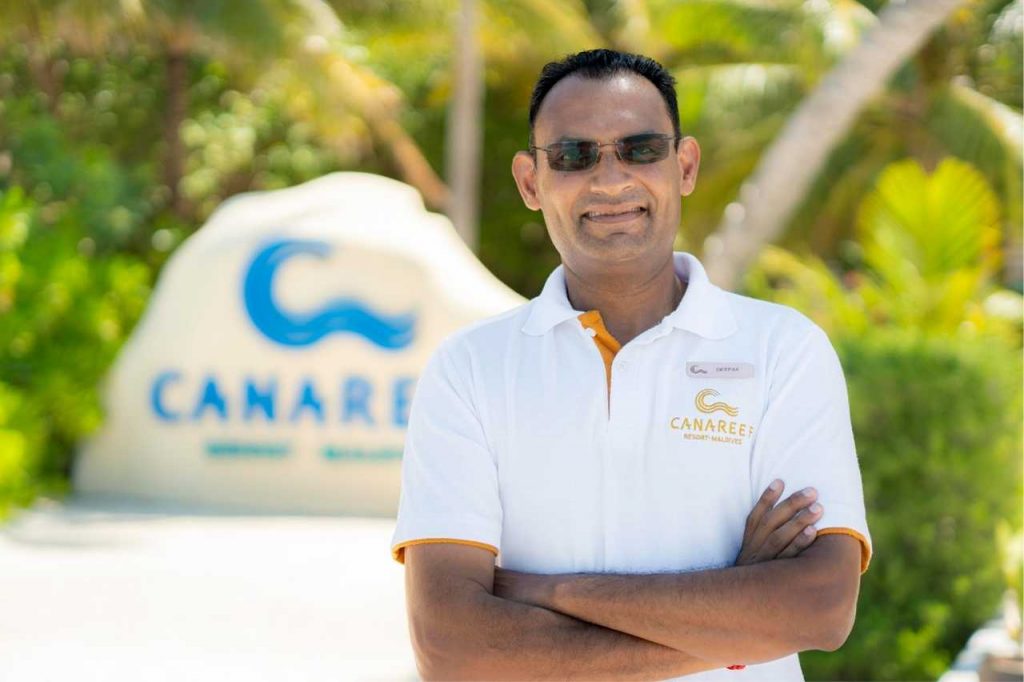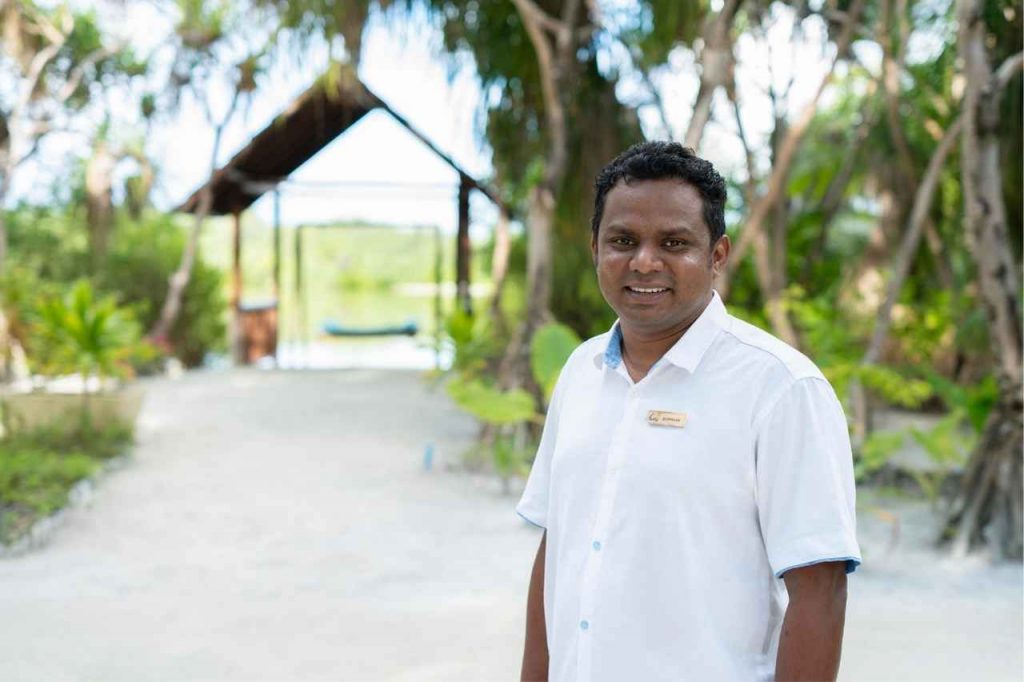Seaplane pilot, Andrew Farr for Trans Maldivian Airways tells us about his job in paradise, from barefoot flying to dolphin delays.
1. Introduce yourself.
My name is Andrew Farr and I’m from Canada. I’ve been working here in the beautiful Maldives for ten amazing years. I work as a captain at Trans Maldivian Airways, the world’s largest seaplane operation, and I’ve loved every second of it!
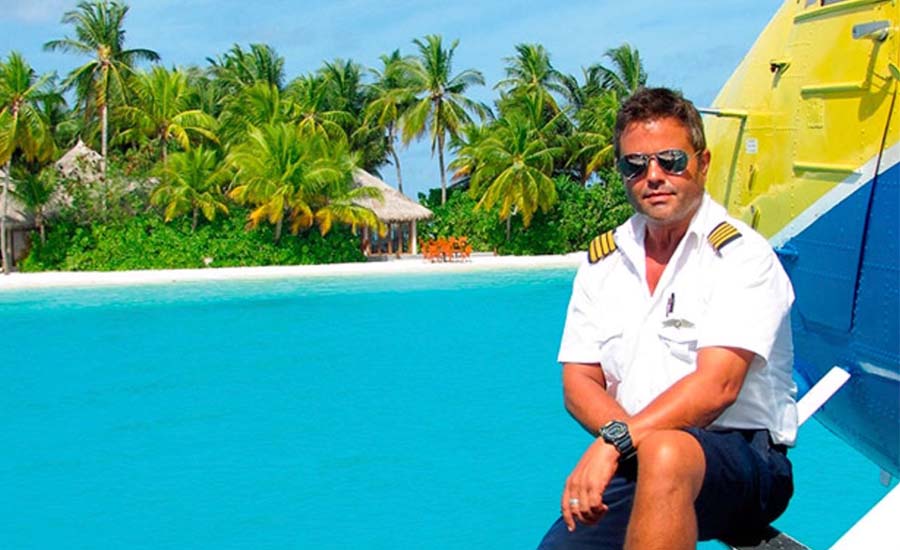
2. Where does your piloting Story Begin ?
I started my career in Canada, about 20 years ago, where I was a bush pilot flying in the wilderness of the far north. I’ve flown just about every type of aircraft with floats attached. In this area of Canada, there are very few communities and they’re separated by hundreds of miles, with no roads between, except in the winter months, when they build winter roads across the frozen lakes. Even then, it can be a 24-hour drive to civilization. In the summer months, the only way to travel is by plane and seaplanes are as common a sight in the north as moose.
It was always my dream to follow in my father’s footsteps and be a pilot. I first took control of an airplane on my 7th birthday during our summer vacation. Across the lake from where we were staying, there was a small float plane and I convinced my father to talk to the owner and see if he would take us up. I sat in the front with the pilot and my father and sister sat in the back. The pilot even let me take control of the plane and basically gave me my first lesson. After the flight, I was hooked!
3. How did you become a seaplane pilot in the Maldives?
I didn’t start out wanting to be a seaplane pilot. I had my sights on flying the big metal to all corners of the earth, but after flight school and the completion of a Commercial Pilot’s Licence, the only real options to build flying time in Canada are to be an instructor or bush pilot. I got my seaplane rating and headed north to find a job. It took me many months and a thousand resumes, but I finally got my first job. I thought it would just be a way to get the required hours and experience to get to the airlines. But it was so much fun! In the winter, we would trade floats for skis and land on the frozen lake surfaces.
It was after my sixth or so winter in the north that I realized I wasn’t a fan of Canadian winters. After five months of -40 centigrade temperatures I sought out year-round float flying jobs in warmer climates. After many years of applying to Trans Maldivian, they finally felt I had the required experience and they offered me a job. I jumped on the next flight to the Maldives! I knew the moment I got here, I had made the right decision. The people were so nice to me, the views amazing and the temperatures a little warmer than Canada. I’ve been here for ten years and hope I am allowed to stay for many more and enjoy being a seaplane pilot.
4. What are the best things about your job?
We get to meet the passengers face-to-face as we don’t have locked cockpit doors. I often turn around in flight and am always thrilled to see the smiling faces of our guests as they look out the windows at the amazing sights and colours of our beautiful Maldives. I’d like to think that the flight itself will be one of their favourite memories of their trip to paradise. For me too, I never get tired of the view out my office window. Seaplane pilot often see pods of whales or dolphins or turtles or manta rays and whale sharks. We get to know the areas where we can expect to see them and I always tell the passengers to be on the lookout. Sometimes while we are taxiing out for departure, pods of dolphins will come right up next to the plane and we have to delay our take off until they have moved on. The passengers really get excited when this happens, as do I! The abundance of sea life here is unlike anywhere else in the world. I feel like a tour guide as well as a pilot and I never get tired of sharing my experiences with our guests. At least once a day, one of them will tell me I have the best job in the world. I couldn’t agree more!
5. Tell us about your uniform.
One of the best things about my job is flying barefoot; we even have a Barefoot Pilots Association. We do wear a regular pilot’s uniform, but we wear shorts and flip flops too. It’s very liberating. I don’t think the guys and girls flying the big airliners get to do that.
6. Describe a typical day for you.
I get up at 4am ready to catch a Dhoni (local boat) at 5am from Malé, where I live, to the airport island. I get to my assigned aircraft and prepare the plane for its first flight of the day, which is at 6am sharp. It’s amazing to see the sunrise every morning, from the air. Each one is different but equally beautiful. Each plane does five or six return trips per day, transporting upwards of 100 passengers over the course of the day. With 46 planes constantly coming and going, that’s a lot of smiling faces! The flying part of the day usually ends at sunset. Most days end with the plane and seaplane pilot and crew at a resort, so we can position the plane for early morning departures. This is another amazing part of my job. Three or four nights a week, I get to stay at some of the most gorgeous resorts in the world…..and I get paid to do it! Tough job, I know.
7. What have been your most memorable experiences at Maldivian resorts?
We go to the resorts so often that we can feel like family. At one resort well-known for its in-house coffee roasting and brewing, I landed there once for the night after the coffee bar was closed. I mentioned to the resort manager at dinner that I was sad I got there too late for the world’s best coffee. The next morning before sunrise, while we were getting the plane ready, he showed up on the dock and gave me a bag of their freshly roasted coffee beans. I couldn’t believe it. If they do things like that for the pilots, just imagine the level of service the paying guests get! It’s like that everywhere here in paradise. The level of service is world class and I see it every day.
Another time at a different resort, the pier had 100 staff waiting for one of our passengers as we arrived, with a huge banner saying: “Welcome home, congrats on your 35th visit!” That says a lot about the Maldives and its resorts. People return time after time to the same place, and I’d imagine it really does feel like home to them. It does to me.
8. Where is the most spectacular view from the sky?
Any view outside my aircraft window affords beautiful views. Passengers have their faces constantly glued to the windows, saying they can’t believe the colour of the water. I tell them the resort staff get up very early in the morning and paint the bottom of the lagoons blue. Sometimes they look like they believe me, as it seems impossible Mother Nature could be such a splendid artist! Taking a seaplane is part of the Maldivian experience. Sometimes guests decide they would rather take the plane even though it would only be a short boat ride to their resort.
The Twin Otters we fly have many windows, but one aircraft in particular has huge viewing windows. I believe it came from the United States where it was purposely built that way for tours over the Grand Canyon. The windows are from floor to ceiling. When I’m flying that plane, I’ll look back and am always stunned at the view. I wish all our planes had those large windows but from an operational point of view, it isn’t the best option as it adds weight to the aircraft and that results in us having to take fewer passengers or luggage to meet the required take-off weight. This is the plane we take for scenic flights, for visitors staying in resorts close to the airport.
9. How do you describe your job to your friends?
I tell them it is just like that old TV show Fantasy Island, but on steroids! I sometimes catch myself looking down at the resorts, expecting to see that little man in the white suit saying: “Boss…de plane…de plane!”
10. What’s the funniest thing that’s happened to you as a seaplane pilot?
Sometimes people ask me if I ever want to be a ‘commercial’ pilot. While we may not be flying planes with hundreds of passengers, all the pilots at Trans Maldivian have to be full commercial pilots. As a captain, I have to have an Airline Transport Licence – the same licence that a captain of a large airliner has to have. I think it’s funny when people ask this question. I may have the same education and licence as a 747 captain, but I’m sure I have much more fun flying these wonderful seaplanes!
11. Do you get advance warning if you’ll be flying a celebrity?
The Maldives is a lure for many celebrities, sports stars and royalty, as it offers seclusion and privacy on top of world class service. I always know when I have someone famous on my flight because the passenger list will have a name like ‘Snow White’, ‘Roger Rabbit’ or ‘Cinderella’ on it. If they wanted to remain anonymous, I would have thought a name like ‘John Smith’ would prove more effective. This cracks me up every time! As a guest at some of the higher end resorts, it isn’t uncommon to look up from the table at dinner and see someone famous sitting next to you. Cinderella has to eat too, after all.
Photos courtesy of Andrew Farr. Cover Photo by MVHOTELS




